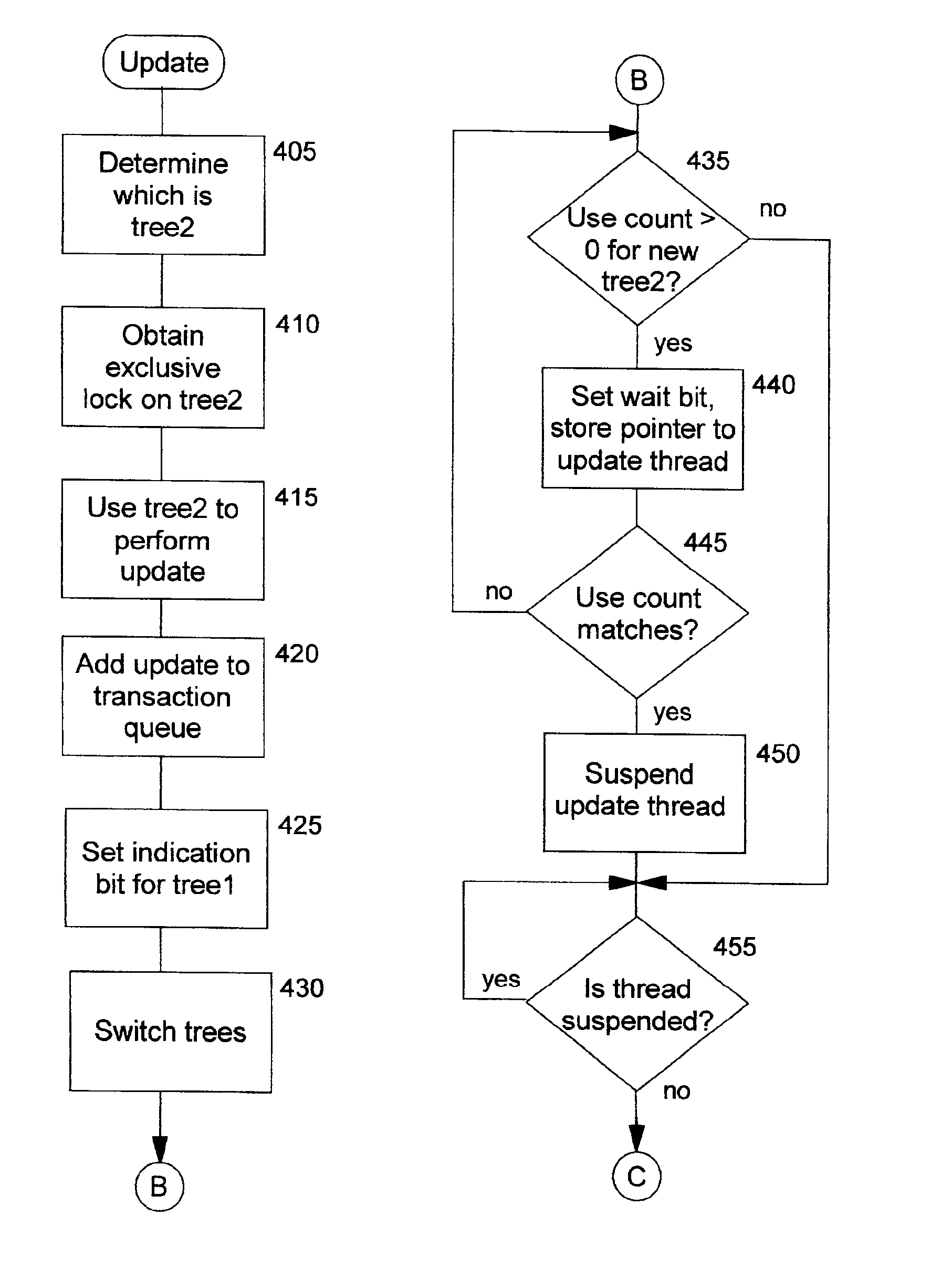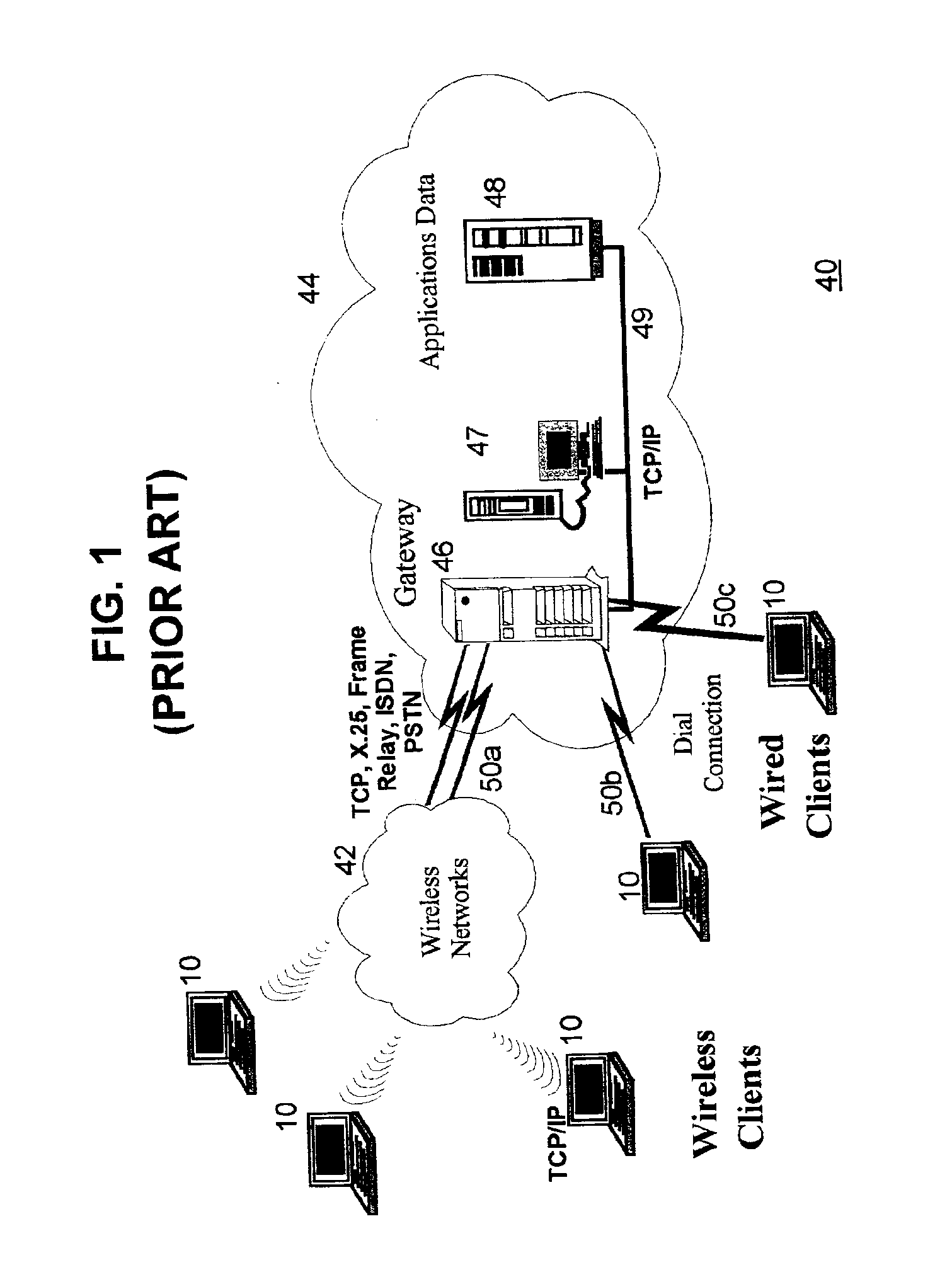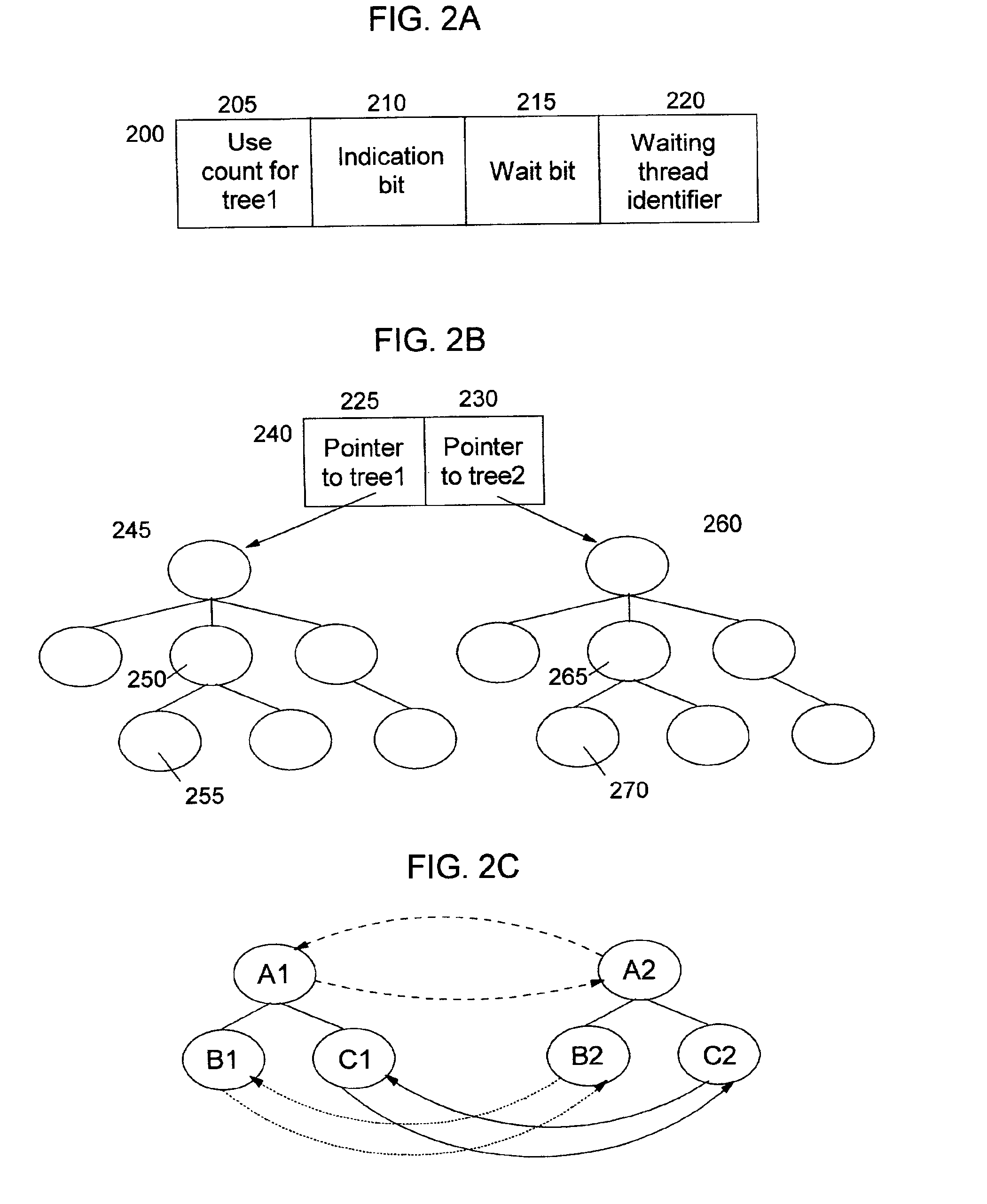Technique for serializing data structure updates and retrievals without requiring searchers to use locks
a data structure and serialization technology, applied in the computer system field, can solve the problems of reducing system performance, serialization task becomes particularly difficult, algorithm execution time is complex and expensive, etc., and achieves the effect of minimizing the use of locks
- Summary
- Abstract
- Description
- Claims
- Application Information
AI Technical Summary
Benefits of technology
Problems solved by technology
Method used
Image
Examples
Embodiment Construction
FIG. 1 illustrates a data processing network 40 in which the present invention may be practiced. The data processing network 40 may include a plurality of individual networks, such as wireless network 42 and network 44, each of which may include a plurality of individual workstations 10. One or more routers (not shown) are typically used to route traffic among networks. Additionally, as those skilled in the art will appreciate, one or more LANs may be included (not shown), where a LAN may comprise a plurality of intelligent workstations coupled to a host processor.
Still referring to FIG. 1, the networks 42 and 44 may also include mainframe computers or servers, such as a gateway computer 46 or application server 47 (which may access a data repository 48). A gateway computer 46 serves as a point of entry into each network 44. The gateway 46 may be preferably coupled to another network 42 by means of a communications link 50a. The gateway 46 may also be directly coupled to one or more...
PUM
 Login to View More
Login to View More Abstract
Description
Claims
Application Information
 Login to View More
Login to View More - R&D
- Intellectual Property
- Life Sciences
- Materials
- Tech Scout
- Unparalleled Data Quality
- Higher Quality Content
- 60% Fewer Hallucinations
Browse by: Latest US Patents, China's latest patents, Technical Efficacy Thesaurus, Application Domain, Technology Topic, Popular Technical Reports.
© 2025 PatSnap. All rights reserved.Legal|Privacy policy|Modern Slavery Act Transparency Statement|Sitemap|About US| Contact US: help@patsnap.com



